
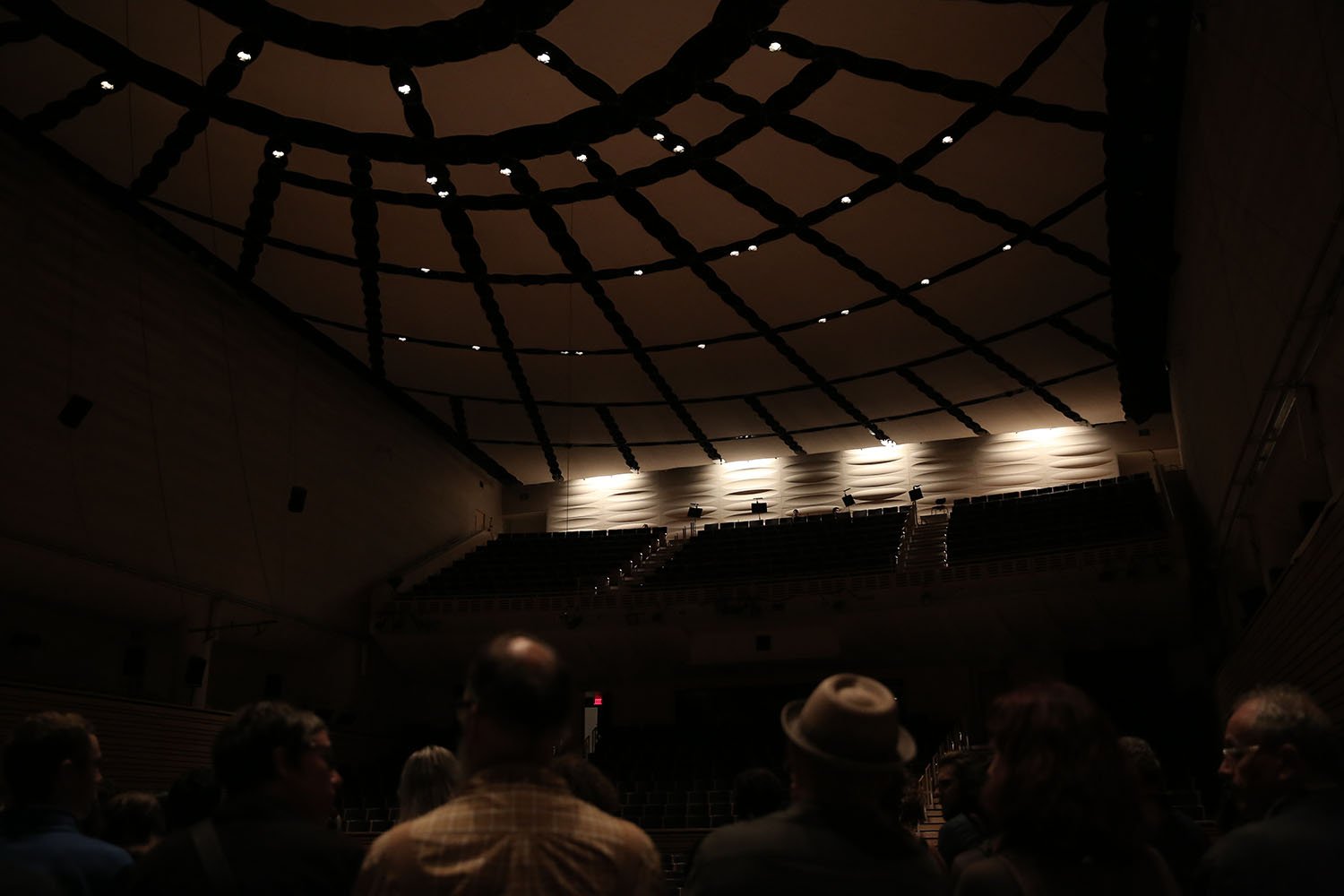
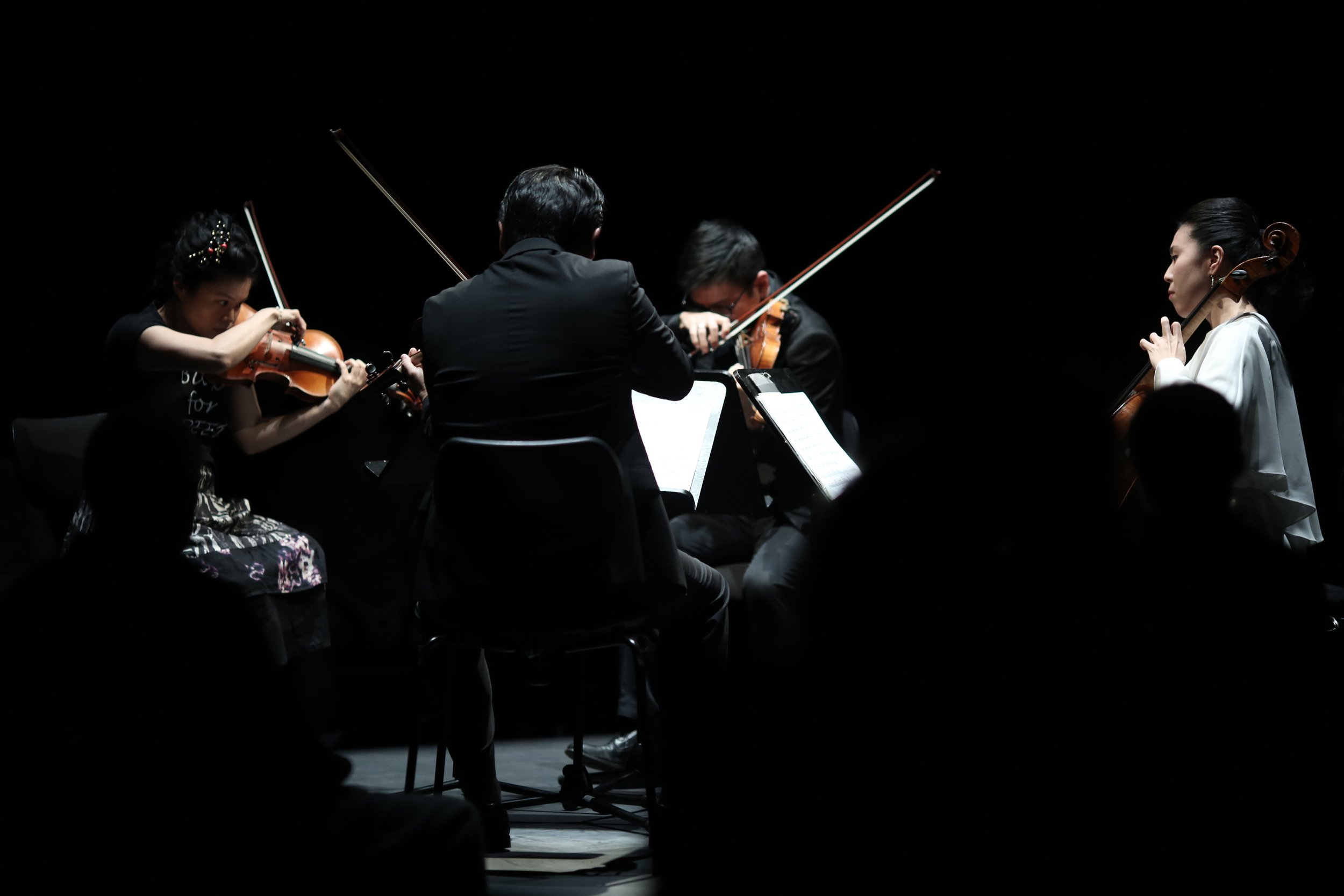
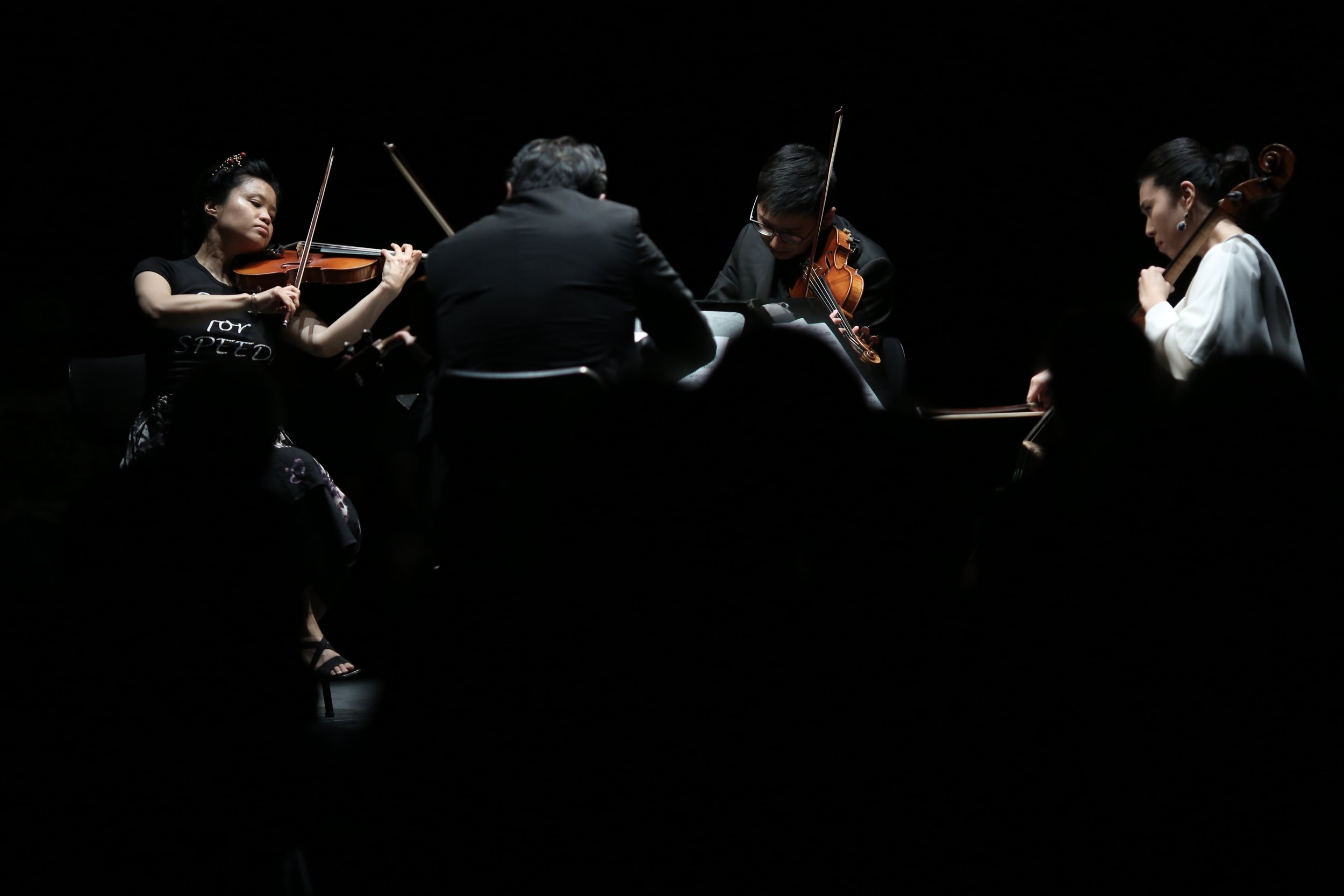
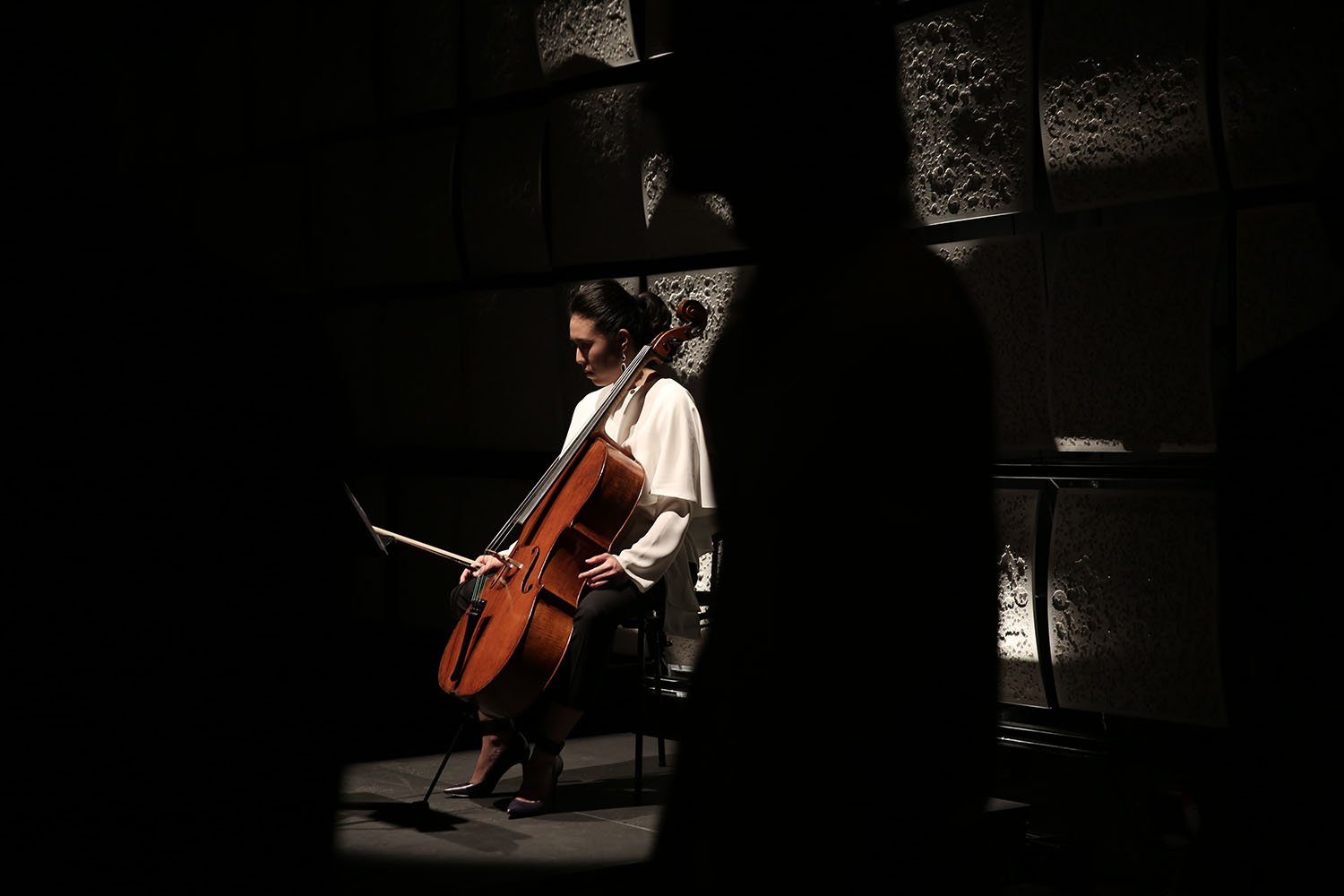
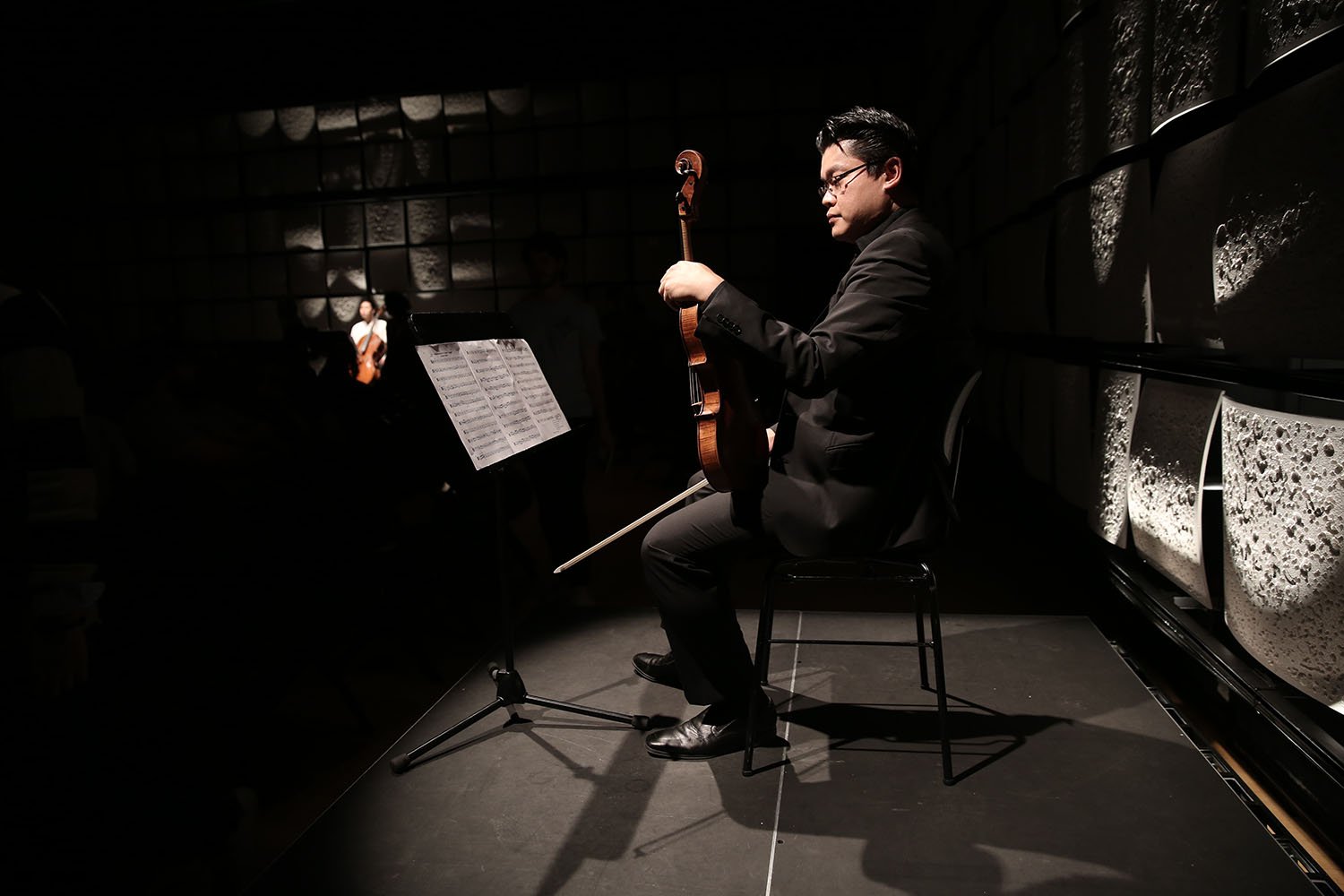





PC: Paula Court courtesy of EMPAC
On October 11, 2018…
the Formosa Quartet launched the opening of the EMPAC: 10YEARS Festival Performances, a three-day festival at Experimental Media and Performing Arts Center (EMPAC) at Rensselaer Polytechnic Institute in Troy, New York. In 2021, their performance titled “Double Quartet: Strings and Spaces” was turned into a virtual exhibition by Google Arts & Culture for viewers to experience anywhere around the world.
Curated together with founding director, Johannes Goebel, the Formosa Quartet led audience members on a unique musical journey through all four state-of-the-art EMPAC venues—the Concert Hall, Theater, Studio 1, and Studio 2—to hear how, in performance, the room is as important as the musicians and music. Each piece was carefully paired with each space, delving into an exploration of physical placement, acoustics, perspective, and ways in which art and space define each other.
Formosa Quartet plays Joseph Haydn, String Quartet in E-flat major, Op.76 No.6, 2nd movement (1796/97) from the balcony of Concert Hall 1 with the audience seated on the stage. PC: Paula Court
Concert Hall 1 — Joseph Haydn, String Quartet in E-flat major, Op.76 No.6, 2nd movement (1796/97)
“Starting out in the Concert Hall, the audience sits on the stage facing the back of the hall, where the quartet plays far away at the top of the balcony. This highlights a unique property of the Concert Hall, which was specifically designed to have any sound come to the audience from any place in the hall with the same quality as if they were playing on stage. The movement of the string quartet by Austrian composer Joseph Haydn, regarded as the composer who established the string quartet as genre, comes from far away in time and space.”
Formosa Quartet plays the 5th movement from Béla Bartók, String Quartet No. 4 (1927) in Studio 1, the space with the shortest reverberation time. PC: Paula Court
Studio 1 — Béla Bartók, String Quartet No. 4, 5th movement (1927)
“Béla Bartók, String Quartet No. 4, 5th movement (1927)Studio 1 is the space with the shortest reverberation time of all the venues. The audience sits in circles close to the string quartet in the center. The proximity of musicians and audience, the acoustics of the space, and the driving intensity of the music create heat. It’s hardly imaginable that this music was composed almost 100 years ago and only five quarters of a century later than the Haydn piece.”
Seated at the center of Studio 2’s four walls with the audience in the center facing out, the Formosa Quartet played Johann Sebastian Bach’s Die Kunst der Fuge, Contrapunctus XIV. PC: Paula Court
Studio 2 — Johann Sebastian Bach, Die Kunst der Fuge, Contrapunctus XIV
“Johann Sebastian Bach, Die Kunst der Fuge, Contrapunctus XIVStudio 2 is set up the opposite way to Studio 1; the audience sits in circles facing outwards, and each of the musicians is positioned at the center of one of the four walls. The Art of the Fugue was composed in the last decade of Bach’s life, between 1740–50. It’s an ongoing debate for which instruments it was composed, if intended for any specific instruments at all. This last fugue Bach wrote was left unfinished and, in this performance, it will end with the last bar Bach wrote. A fugue is a highly specific framework where the voices are independent and joint at the same time. Positioning the string quartet spatially around the audience spins the musical lines through the volume of the studio, so they meet in the space of each audience member.”
PC: Paula Court
Theater — Shih-Hui Chen, Returning Souls (2013)
“In the Theater, the Formosa Quartet is invisible, sitting in the orchestra pit 6ft/3m below the front of the stage, enveloped by red light emanating from the pit.
Shih-Hui Chen is a Taiwanese composer who lives and works in the United States.”
The Formosa Quartet returns full circle to the Concert Hall, but now on the main stage. PC: Paula Court
Concert Hall II — Lei Liang, Song Recollections (2016)
“For the final piece in the Concert Hall, audience and musicians are in their traditional juxtaposition, the quartet on stage and the audience in the so-called orchestra seats. Lei Liang was commissioned by Formosa Quartet to create Song Recollections. Lei Liang is a Chinese-born American composer.”
Google Arts & Culture
In April 2021, Google Arts & Culture featured the Formosa Quartet’s performance "Double Quartet: Strings and Spaces". Viewers anywhere in the world can now visit this newly released virtual exhibit on Google Arts & Culture and experience the Formosa Quartet and other artists’ performances in each space where you can hear the spatial differences and dynamism of each work.


